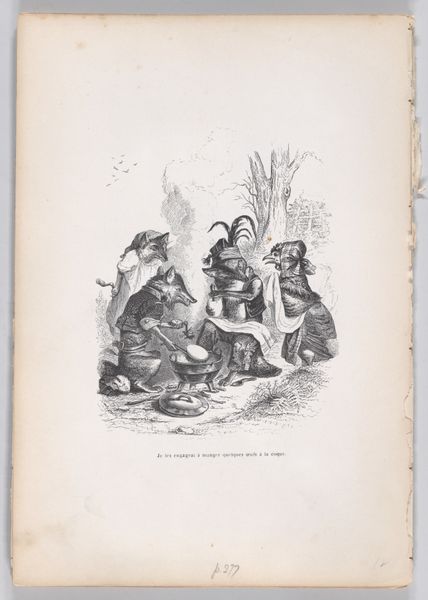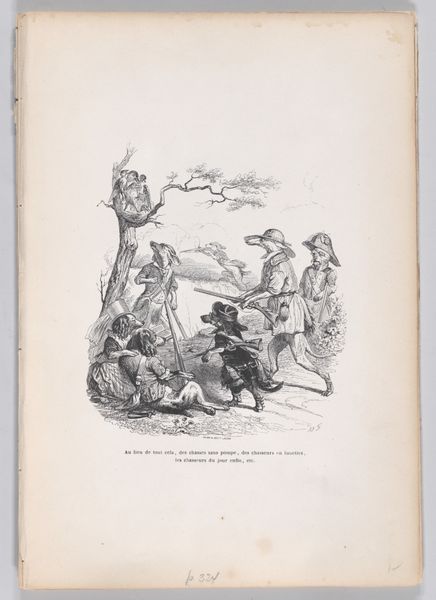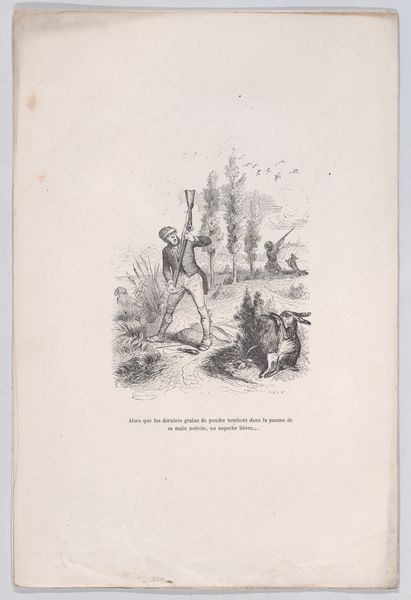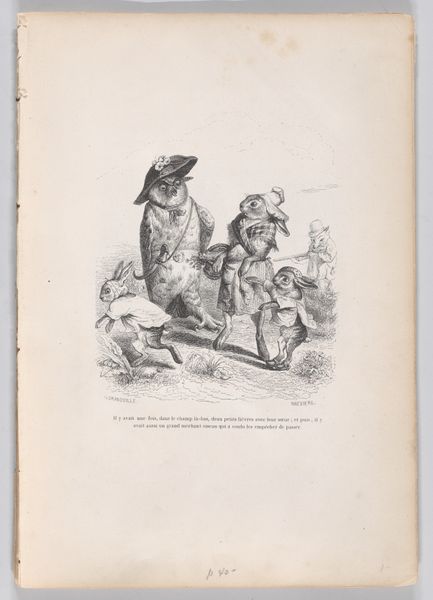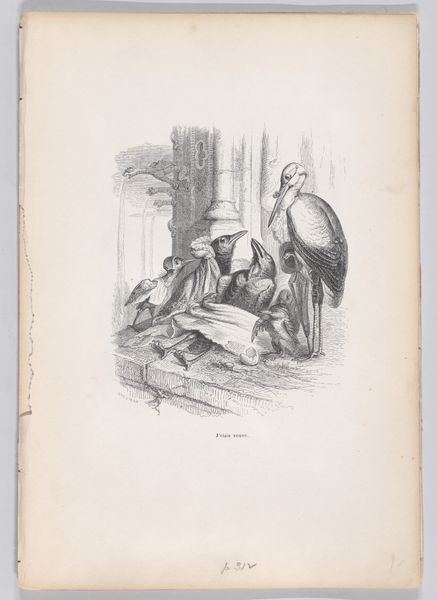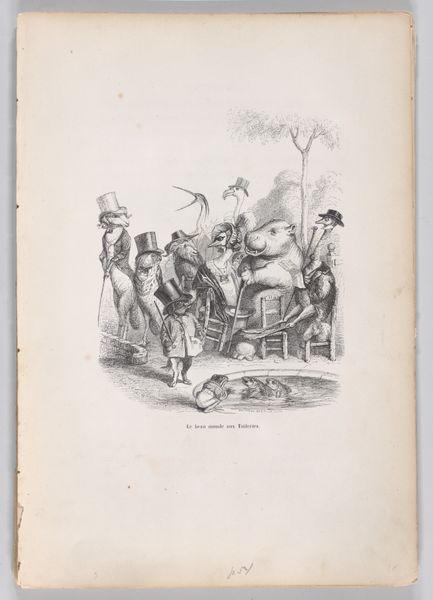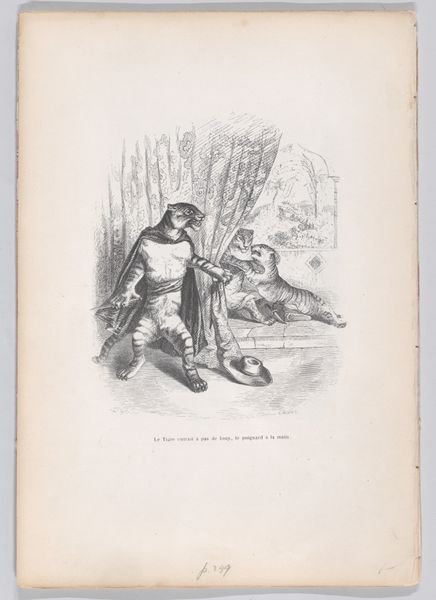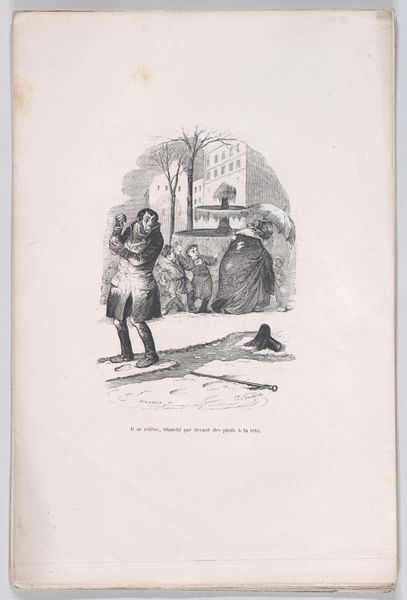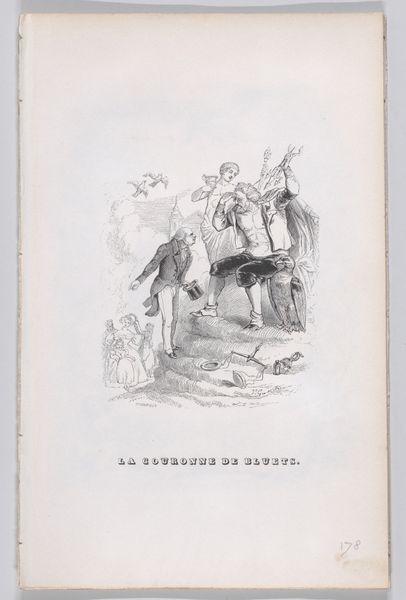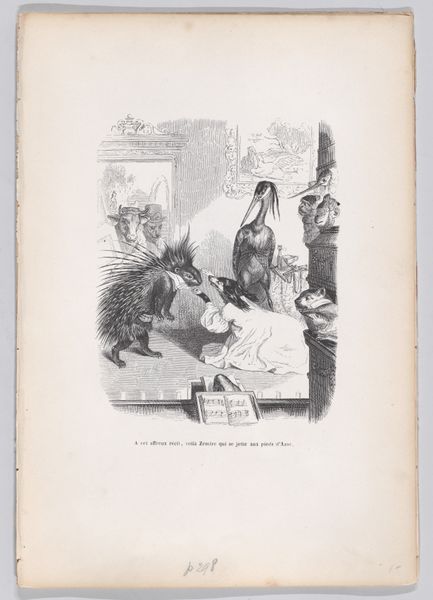
"The further we go, the less we penetrate the horrible mystery of which the unfortunate toad was a victim" from Scenes from the Private and Public Life of Animals 1832 - 1852
0:00
0:00
drawing, lithograph, print, etching
#
drawing
#
lithograph
# print
#
etching
#
caricature
#
romanticism
#
genre-painting
Dimensions: Sheet: 10 3/8 × 7 3/16 in. (26.3 × 18.2 cm)
Copyright: Public Domain
Editor: We’re looking at a print by J. J. Grandville, dating from between 1832 and 1852. It's titled "The further we go, the less we penetrate the horrible mystery of which the unfortunate toad was a victim,” from *Scenes from the Private and Public Life of Animals.* It's made with lithography and etching. The scene is filled with animal-human hybrids acting out some sort of judicial ceremony with a toad at the center of it. It feels allegorical, but I'm not entirely sure what it’s getting at. What do you see in this piece? Curator: Well, beyond the surface of the image itself, I am drawn to examine the social context in which such anthropomorphic satires were produced and consumed. Consider the means of production – lithography and etching allowed for relatively widespread reproduction and distribution. This speaks to a growing middle class and a market for printed materials critiquing social and political norms. How do you think the availability of these materials affected social discourse at the time? Editor: That's interesting. I guess having images like these circulating could definitely shape public opinion, making criticism more accessible. Are you suggesting that Grandville's choice of materials and printmaking techniques was inherently political? Curator: Absolutely! The very act of mass-producing such imagery is a form of democratizing dissent. And look closer – how does Grandville use the specific materiality of lithography and etching, the lines and tones he achieves, to emphasize certain power dynamics or to highlight the absurdity of the animal-human court? Editor: Now that I look more closely, I see how the detailed etching really emphasizes the texture of the animals' clothing, especially in contrast to the limp body of the toad. I never would have considered the printing method as being part of the statement itself! Curator: Exactly. The materiality, the method, it all feeds into the meaning and impact of the artwork. By understanding how these images were made, circulated, and consumed, we get a richer understanding of its function and resonance. Editor: I see that now. Considering the context of the materials and labor involved really opens up a new way to understand the piece. Curator: Indeed. The consumption of such imagery served as a release valve. Hopefully you now see it's essential not just to what is being represented but how.
Comments
No comments
Be the first to comment and join the conversation on the ultimate creative platform.
